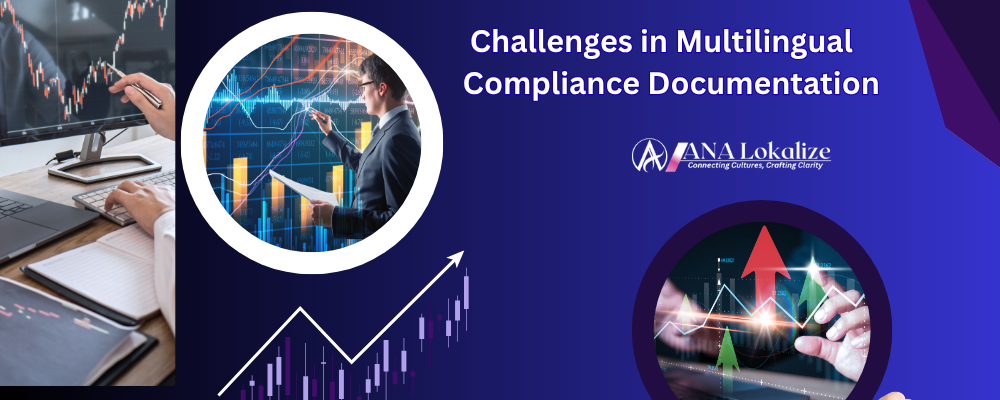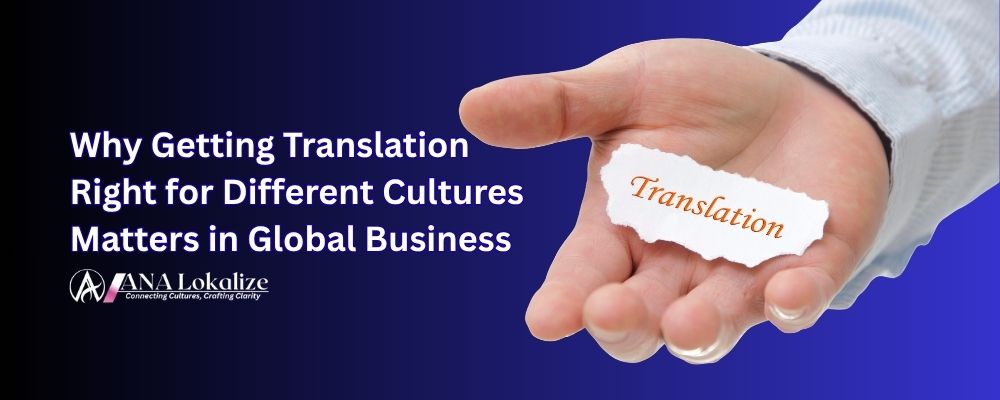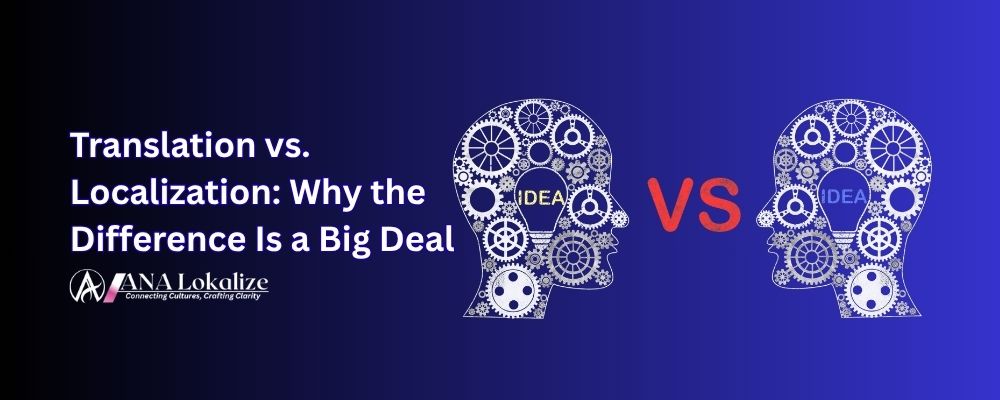Banking and Finance: Challenges in Multilingual Compliance Documentation

Banking and Finance: Challenges in Multilingual Compliance Documentation
In global banking and finance, clear and accurate communication is vital. Financial institutions now serve customers across continents, cultures, and languages. As a result, compliance documentation must be produced and maintained in many languages. This process is not simple. It requires precision, consistency, and a deep understanding of legal and financial terms. Any mistake can have serious consequences, including legal penalties and loss of trust.
The financial industry operates under strict regulations. Every country has its own rules for taxes, data privacy, anti-money laundering (AML), and customer verification (KYC). Multinational banks must follow all these laws while communicating clearly with regulators and clients in each market. Compliance documentation includes internal policies, legal disclosures, client contracts, and training materials. When these documents are translated, accuracy becomes the top priority. Even a small change in meaning can alter legal obligations and expose the organization to risks.
The biggest challenge is that compliance language is highly technical. It combines legal, financial, and procedural terms that are not always easy to translate. Many words have no direct equivalent in other languages. Translators must understand both the source and target legal systems to find the right term. A simple, literal translation can distort meaning and create confusion. For instance, a phrase that is legally binding in English may not carry the same weight in another language unless adjusted carefully. This demands expert translators with legal and financial backgrounds.
Consistency is another major issue. A global bank may have hundreds of compliance documents shared across offices worldwide. These documents must remain aligned with corporate standards while reflecting local laws. Without a unified translation process, differences can appear between versions. Small inconsistencies, such as variations in terminology or phrasing, can cause serious misunderstandings. Maintaining uniformity across multiple jurisdictions requires strong terminology management and constant review.
Financial regulations change frequently. Governments update laws and reporting requirements in response to market conditions or global events. When regulations change, compliance documents must be updated immediately. Translating and reissuing every version across several languages is complex and time-consuming. Any delay in updating multilingual materials can leave a company exposed to non-compliance. Automated translation tools can help, but human review remains essential to preserve meaning and accuracy.
Data security also plays a key role in multilingual compliance. Compliance documents often include sensitive information such as client data, account details, or internal procedures. Sharing these files with external translation vendors can create data privacy risks. Financial institutions must ensure that their translation partners follow strict security protocols, such as encrypted file transfer and secure storage. In regions like the European Union, compliance with GDPR (General Data Protection Regulation) is mandatory. Any data breach can lead to severe financial and reputational damage.
Cultural and linguistic differences add another layer of complexity. Financial terminology can have subtle nuances that depend on local usage. A term used in the United States might mean something slightly different in Japan or Germany. Translators must also consider how readers interpret legal tone and formality. For example, a phrase such as “should comply” might sound optional in one language but mandatory in another. Misinterpretations like this can cause compliance failures. Translators must balance precision with readability, ensuring that every version carries the same intent and force.
Maintaining translation quality at scale is another challenge. Banks generate large volumes of content, from policy updates to risk reports and training guides. Managing multilingual versions across formats—PDFs, spreadsheets, intranet pages, and e-learning platforms—requires a structured workflow. Manual tracking can lead to errors, duplication, or outdated materials circulating internally. To prevent this, many institutions now use translation management systems (TMS) that centralize translation tasks. These platforms store approved terms, maintain translation memories, and automate version control.
Technology supports efficiency, but human expertise is still essential. Professional translators specializing in banking and finance understand the meaning behind complex phrases and ensure that local versions stay legally sound. Back-translation—translating a document back to its original language—can help detect errors before final approval. Legal teams often review these drafts to confirm that the translated text matches the original intent. This multi-step process ensures that all documents are accurate and compliant.
Another effective strategy is the use of translation memory (TM) and terminology databases. These tools store previously translated phrases and approved terminology. When the same or similar sentences appear in future documents, the system suggests consistent translations. This not only saves time but also improves consistency across updates. Combined with AI-based translation support, this method allows faster turnaround while maintaining quality. Still, human oversight remains critical, especially for sensitive legal or compliance materials.
Machine translation has made progress, but it cannot replace expert judgment. Automated tools can handle repetitive or low-risk content, such as internal training summaries. However, when it comes to legal disclaimers, audit reports, or policy statements, human review is non-negotiable. A single mistranslated clause could lead to regulatory violations. Many organizations now use a hybrid model: machine translation for draft creation and professional editing for final review. This approach combines speed with accuracy.
Confidentiality agreements with translation vendors are also essential. Before outsourcing translation work, banks must verify that their partners follow international data protection standards and use secure, closed systems. Translators should work within restricted platforms without the ability to download or share files externally. This helps prevent data leaks and ensures compliance with both corporate and legal standards.
Another challenge comes from localization—the process of adapting content for local audiences. Compliance documents are not just about translation; they must also fit local context. For instance, references to laws, currencies, or government agencies must be updated for each region. Legal formatting and citation styles may differ from one country to another. Localization ensures that the document feels native while keeping the original meaning intact. Failure to localize can make a document confusing or even invalid in some jurisdictions.
Training is another critical aspect. Employees responsible for compliance must understand policies clearly, regardless of their language background. Poor translation can lead to misunderstanding or misapplication of rules. Localized e-learning modules, quizzes, and guides help ensure that everyone across the organization interprets the same information consistently. Investing in multilingual communication strengthens compliance culture and reduces risk.
Ultimately, multilingual compliance documentation is about more than translation—it’s about trust and accountability. Financial institutions handle people’s money and personal information. Clients and regulators must trust that every word in a contract or disclosure is accurate. Errors can damage credibility and cause long-term harm. That’s why banks treat multilingual compliance as a high-priority process supported by technology, skilled linguists, and legal experts.
As financial operations continue to expand globally, the importance of precise multilingual documentation will only increase. Organizations that invest in structured translation workflows, reliable technology, and expert review will be better prepared for changing regulations. They will also earn greater confidence from regulators and clients alike. In banking and finance, compliance is not optional—and in a multilingual world, accuracy across languages is a legal and ethical necessity.
Stephane B. Atangana
Professional translation and localization experts with 10 years of experience in helping businesses connect with global audiences.
Search Articles
Related Articles

key to successful corporate communication, AI vs Human translation

Why Getting Translation Right for Different Cultures Matters in Global Business

Translation vs. Localization: Why the Difference Is a Big Deal
Subscribe to Our Newsletter
Get the latest translation insights and industry news delivered to your inbox.
We respect your privacy. Unsubscribe at any time.
